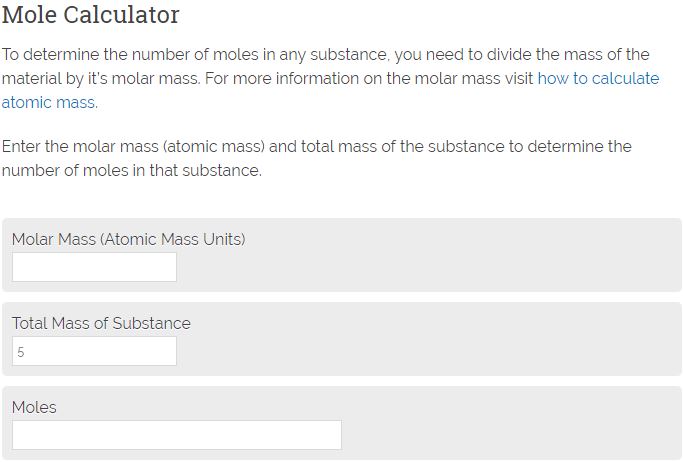A mole, not the kind you find on your skin or in your yard, but in scientific terms, is a standard scientific measure for large quantities of small objects such as atoms.
A mole is a unit less measure defined with the number of 6.02214076 X 10^23. Originally this unit was defined as the number of atoms in 12 grams of carbon-12. It has since been changed to a set arbitrary number.
The number above is also known as the Avogadro’s number. Named after the physicist who proposed the idea back in 1776-1856.
The number of atoms in one mole of any substance is the same, but the masses of those substances will be different. For instance, one mole of carbon 12 has a mass of 12 grams. One mole of oxygen has a mass of 15.999 grams.
Mole Calculator
To determine the number of moles in any substance, you need to divide the mass of the material by it’s molar mass. For more information on the molar mass visit how to calculate atomic mass.
Enter the molar mass (atomic mass) and total mass of the substance to determine the number of moles in that substance.
The concept of a mole was generated to help put microscopic level calculations into perspective. Extremely small sizes and numbers are very hard for you to visualize or conceptualize. For that reason, constants such as a mole are created.
For example, if you are doing calculations on the chemical reaction of water to oxygen and hydrogen, using the total number of atoms would yield some magnitude of X 10^23 or .000000000000000000000010. Using those in calculations and visualization is difficult. Instead, you can simply say that is equal to one mole. Doing 1 times 2 is much easier than 10^23 times 20^23.
To simplify equations even further in chemistry, the idea of molarity was created. Molarity is defined as the number of moles in a liter of solution.
